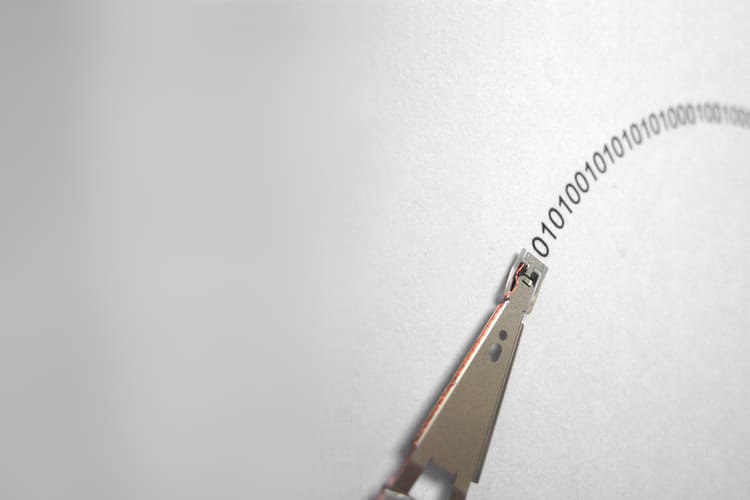If you have a bad block on your disk, you have a problem… When this happens, it means that the storage device has suffered some damage that has impaired its functioning. It means that you no longer have access to the data that was on the damaged area.
But don’t worry: the loss of data is not permanent. There are ways to recover photos, documents and files from disks with bad blocks, as long as you look for the right solutions – and don’t try to fix it yourself!
Below, we will go into all the details about what a bad block is, what can cause this problem and what to do when it happens. Follow along!

What is a Bad Block on a disk?
Bad blocks are physical defects in the sectors of a disk. They appear when there is damage to the device that damages an area of the disk.
This area can then slow down the computer, stop loading and make the data inaccessible to the user. The term “bad block” means a damaged area on the disk. A block contains one or more sectors, which, when damaged, are called “bad sectors”. So a bad block can contain bad sectors, but not the other way around. Despite the differences, these terms are often used synonymously.
To understand what a bad block is, it is important to understand how a disk works. ‘HD’ stands for Hard Disk, which refers to the main element of the device: the disk that stores the data.
When you save a document or photo on your computer, for example, the file goes to one of the disk’s sectors, which act as data “drawers”.
When the disk rotates at high speed around its central axis, the read head – supported by a movable arm – writes the data to the disk or, in the opposite direction, reads the data from the disk and transmits it to the computer.
The appearance of a bad block means that one of these storage sectors has been affected and that the data stored there is inaccessible to the user.
What is a reserved area?
The reserved area is a solution that the current disk technology itself uses to avoid making it impossible to access the data in the damaged sector.
When a bad block or bad sector occurs, the disk controller board itself usually identifies the defective sector and makes the read head ignore that area. So it passes through the damaged area without trying to read or write any data, which would slow down or crash the computer.
Therefore, bad blocks cannot be removed, only marked as defective.
In addition, the card also triggers a replacement technology for the damaged area. The data that was in the problematic sector is transferred to this safe area of the disk, called the reserved area. This is a reserve storage sector, used precisely in the event of problems with the DISK.
This process of transferring the address of the damaged sector to the reserved area is called disk remapping. This can happen countless times, as the controller card identifies problems with the disk without you even noticing.
However, a disk with too many bad blocks becomes a problem because there is a storage limit for the reserved area. So when the disk starts remapping too often, it is time to make sure the data is backed up and replace it with a new disk.
What can cause Bad Block on a disk?
Bad blocks can be caused by hardware or software problems, either through misuse of the device or accidents.
A physical bad block is one that causes problems with the hardware and can be caused by a variety of situations. It could be, for example, that the disk has suffered a fall or a sudden impact which has caused the read head to hit the disk and damage an area. It could be that, in an attempt to open the disk at home, some dirt or droplets have entered the device.
Disks are very safe devices, they resist impacts and are sealed. But they work mechanically, with sensitive and precise components. They are therefore subject to mechanical failures that impair their functioning.
A software bad block, on the other hand, is caused by a program or electronic problem that affects the disk. When there are sudden power outages or when you disconnect an external disk without removing it properly, a bad block can occur. Virus and malware attacks can also generate bad sectors on the disk.
How to avoid Bad Block on the disk?
As you can see, the bad block is often caused by incorrect use of the device. Therefore, most situations are avoidable. So take care of your disk so that it doesn’t suffer from bad blocks. Here are some tips:
- Be careful when handling and transporting the device, especially laptops and external disks, which are more mobile;
- Store devices in stable, safe and secure places to prevent them from being dropped or hit;
- Don’t do any work on the disk at home, as this can expose the device to dirt from the environment;
- Use antivirus programs, only connect the external disk to reliable devices and be careful with transfers to avoid infections;
- Use a UPS on your computer and unplug it in the event of power fluctuations to avoid a crash;
- Shut down the computer properly (Windows Start/Stop function) and disconnect the external disk only after removing the hardware, to avoid a sudden shutdown.
In any case, even with all these precautions, it is worth keeping a backup of your files. You can use other devices (an external disk, for example) and store them in the cloud. Saving your data in two different places is the best way of ensuring that you don’t lose it, even if the disk is permanently damaged.
How do I know if my disk has Bad Block?
The disk doesn’t warn you that a bad block has appeared. Like a fever or other illness in the human body, you need to analyze the symptoms to determine the diagnosis.
Symptoms of a bad disk block include:
- Slowness or crashing when loading the operating system;
- Error message when trying to repair the system;
- Error message when trying to access or copy files from the disk;
- Difficulty recognizing the device (when it is an external disk);
- Blue screen display when trying to turn on the computer.
These symptoms occur when the disk suffers a bad block and has no area reserved to replace the defective sector. This is usually the case with older disks.
If the disk uses the reserved area to correct the bad blocks, you may not notice any symptoms and continue to use the device normally.
However, when the bad blocks become recurrent and exceed the capacity of the reserved area, more serious symptoms may appear.
How do I recover a Bad Block disk?
A disk with a bad block that has no reserved area does not allow you to access the data stored in the bad sectors. In this case, data recovery must be triggered.
If the disk uses the safe area, it can still access the data, but the damaged area will not be recovered. And if the bad blocks become frequent and impair the functioning of the disk, you also need to activate data recovery to access them again.
To recover a disk with a bad block, you can take a number of measures. But be aware that none of them can recover the physically damaged area, only the data, okay?
First, when you identify the symptoms of a bad block, stop using the disk to avoid more serious problems.
Then you can use the Windows Command Prompt or data recovery software to try to repair the damaged sectors.
The system identifies the problem areas, doesn’t save anything else there and tries to correct the errors. If the disk problem is a software bad block, this procedure may resolve it. But it is important to already have some knowledge of Windows commands and how to use this software, as any misuse can lead to the definitive loss of data and the disk.
That’s why you should contact a professional data recovery service. If the problem is a software bad block, the chances of recovering the data are much greater. If it’s a physical bad block, you’ll need to perform an intervention on the disk that only professionals in the field have the security and knowledge to carry out.
How bot can help you
A company specializing in data recovery like Bot is the best solution for fixing disk bad block problems.
Bot has been working in the market for over 11 years and has experience in a wide range of data loss cases. We have qualified and specialized professionals to check physical bad blocks and software bad blocks and recover stored data.
The entire service is carried out in fully sanitized rooms and with specific equipment that guarantees the best chance of data recovery.
This way, you can once again access all the files, documents and photos stored on the disk and avoid any major worries.
Now contact us for a free quote. You can also request that we collect your device, free of charge, from any address in Portugal for an assessment. Fill in the form now and start recovering data from your disk!


